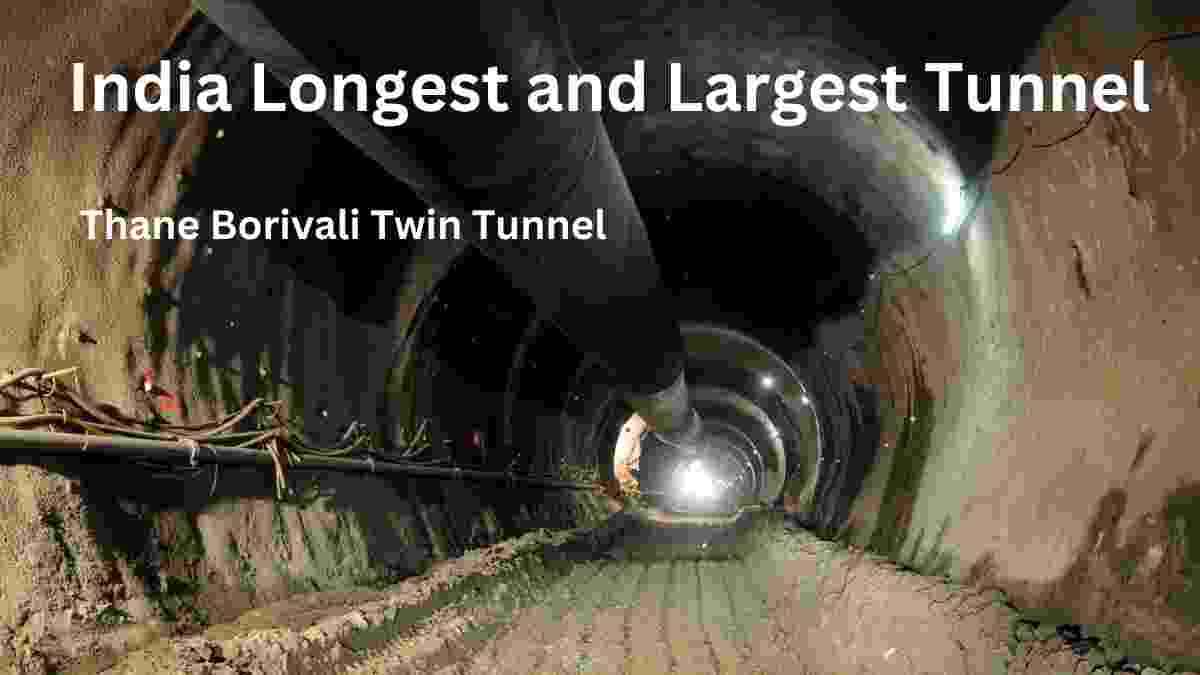Table of Contents
The Thane Borivali Twin Tunnel is India longest and largest tunnel project, connecting Thane and Borivali through a direct subway line that runs for 11.8 km. This ambitious infrastructure initiative is expected to cost Rs. 16,600 crore and promises significant benefits for commuters and the environment.

India Longest and Largest Tunnel: Inauguration by our Prime Minister
On July 13, 2024, Prime Minister Narendra Modi inaugurated the Thane-Borivali Twin Tunnel. The project aims to ease traffic on Ghodbundar Road and the Western Express Highway. Prime Minister Modi emphasized that this tunnel and other infrastructure projects will enhance connectivity in and around Mumbai.
READ MORE:- India’s Longest Cable-Stayed Bridge
Key Features of Thane to Borivali Twin Tunnel
- Tunnel Length: The tunnel spans 11.8 km, making it the longest urban tunnel in India.
- Estimated Cost of Tunnel: Rs. 16,600 crore.
- Operational Lanes: The tunnel features two operational lanes and an additional emergency lane.
- Route: It runs from Thane to National Highway 8 at Borivali.
- Travel Time Reduction: Commuters will save over one hour of travel time, completing the journey in just 12 minutes.
- Carbon Emissions Reduction: The tunnel aims to decrease annual carbon emissions by 1,50,000 MT.
- Completion Target: The project is expected to be finished by May 2028.
Technical Aspects of India’s Longest and Largest Urban Tunnel Thane to Borivali
- The tunnel includes a bored section of 10.25 km with cross passages every 300 meters for connectivity.
- The Mumbai Metropolitan Region Development Authority (MMRDA) plans to use India’s largest tunnel-boring machine for this project.
- MMRDA assures that the twin tunnel’s construction will not harm the environment of Sanjay Gandhi National Park; instead, it will reduce noise and air pollution.
Impact of Thane to Borivali Twin Tunnel on Local Businesses
The Thane to Borivali Twin Tunnel project is expected to significantly impact local businesses and livelihoods.
- Improved Connectivity
- Fuel Savings
- Economic Boost
- Environmental Impact
Improved Connectivity: The tunnel will directly link Thane to Borivali, reducing the commute time from 1-1.5 hours to just 15-20 minutes. This enhanced connectivity will benefit businesses by facilitating faster movement of goods, services, and people.
Fuel Savings: With the shorter route, approximately 10.5 lakh metric tonnes of fuel will be saved annually. Reduced transportation costs can positively affect local businesses.
Economic Boost: The tunnel’s completion will boost regional connectivity, leading to economic growth. Businesses can expect increased footfall and improved accessibility for customers.
Environmental Impact: The tunnel aims to reduce carbon dioxide emissions by 36%. Cleaner air can enhance the overall quality of life for residents and workers.
Challenges Faced During the Tunnel Construction
- Environmental Considerations
- Land Acquisition and Approval
- Traffic Management
- Cost Escalation
Environmental Considerations: The tunnel passes through the protected forest area of Sanjay Gandhi National Park. Balancing infrastructure development with environmental conservation was crucial. The project required wildlife clearance from the National Board for Wildlife.
Land Acquisition and Approval: The tunnel construction necessitated 46.57 hectares of land, including 35.54 hectares of forested area. Prior approval from the Maharashtra State Wildlife Board (MSWB) was essential before commencing construction.
Traffic Management: The existing road between Thane and Borivali (via Ghodbunder) faced heavy traffic congestion, especially during peak hours. The tunnel aimed to reduce travel time significantly, but managing traffic during construction was a challenge.
Cost Escalation: Delays in project execution led to an increase in costs by several thousand crores. The initial estimate of completion time was not met, impacting the overall project budget.
Conclusion
The Thane to Borivali Twin Tunnel represents a leap towards better connectivity, reducing travel time and benefiting both commuters and the environment. As it nears completion, it promises to transform transportation in the Mumbai metropolitan region.




